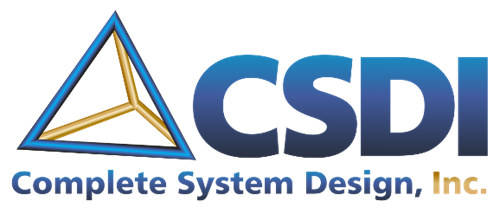75 S. Main Street 7-298
Concord
NH 03301
Office: 603-369-4499
Email: info@csdi.com
The term, cloud computing, was coined by some marketing guys in Houston in 1996. There is no concise technical definition. Nonetheless, the phrase is ubiquitous in the industry. We use the term loosely to refer to computing capability accessed via the internet protocol. While that definition is concise, it is too broad to make any sense out of the thousands of products offered under the moniker. The pizza paradigm does provide a framework that helps understanding.
Legacy IT is the model we grew up with. The consumer purchased the platform, acquired and installed the software and sustained the environment. This is like making pizza from scratch. Sometimes you have a recipe to guide you. Often you don't.
Pros:
Legacy environments are sunk costs. Keeping an existing platform running is what allows you to realize a return from the investment. And, you control the entire environment. Early in the days of cloud computing, retaining your data on premises did reduce the risk data compromise. We argue that is no longer true. See the blog, Info Security in the cloud.
Cons:
You have to maintain the expertise to support the entire technology stack. You own all of the operational headaches as well at disaster recovery and information security. Investment in technology depreciates very quickly.
Infrastructure as a Service is an implementation where the cloud provider delivers computing capacity, usually in the form of virtual machines. In-house datacenter virtualization improves efficiency but adds a significant layer of complexity to the environment. Small companies seldom realize enough improvement from internal hardware virtualization to offset the expense of hiring, training and retaining virtualization specialists.
Iaas providers are responsible for equipment, power and physical security. The consumer chooses the operating system and is responsible for its deployment along with databases and application software software. IaaS is the equivalent of a "take-n-bake" pizza you bring home from the store.
Pros:
Iaas providers solve the virtualization expertise challenge for consumers. Not only do cloud service prices reflect efficient use of the hardware, if you don't use the server you can shut it down and pay only for the storage of the VM image. IaaS makes it possible to move existing applications to the cloud with little or no change. And, IaaS services can scale up and down allowing the consumer to control costs.
Cons:
IaaS architecture does not support every application. There are instances, particularly when huge amounts of data are being processed or passed in and out of the datacenter, where this architecture is not ideal.
Platform as a Service allows consumers to gain economies by sharing services deployed and maintained by the cloud provider. There are many services in this class. Web servers and database servers are common examples and easily understood. Think of PaaS as pizza home delivery.
Pros:
PaaS is ideally suited for routine services like database and web hosting. Service hosting is much less expensive for providers to deliver and that fact is reflected in the fees. Similar to IaaS, PaaS deployment can scale up, down or be shut down, controlling costs.
Cons:
Existing applications usually need some modification before they can be deployed to a PaaS service. Changes to the platform can introduce errors in the application systems.
Software as a Service is software, available on the internet, that you simply use. There are thousands of applications in this category including Microsoft Office 365, GMail, and SalesForce. It is the pizza equivalent of ordering pizza at a restaurant.
Pro:
Instant deployment, no software maintenance and vendor supported. SasS is the simplest form of cloud service to implement. You just logon, provide a form of payment and start using the software. SaaS is often the cost effective solution if your requirements are not unique.
Cons:
SaaS offerings tend to be inflexible. Customization is seldom supported. If the software does not meet your needs, there is no tweaking to get the functionality you want. Also, you may find the product that meets your needs that includes a great deal of functionality you do not need. You can end up purchasing a good deal of capability you can not use.
In order to change an existing paradigm you do not struggle to try and change the problematic model. You create a new model and make the old one obsolete.
R. Buckminster Fuller
